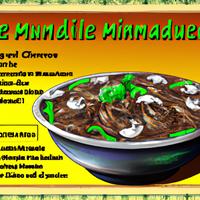
1 serving (100 grams) contains 137 calories, 5.0 grams of protein, 2.0 grams of fat, and 25.0 grams of carbohydrates.

Log this food in SnapCalorie

Nutrition Information
Calories |
274 | ||
|---|---|---|---|
% Daily Value* |
|||
| Total Fat | 4 g | 5% | |
| Saturated Fat | 1 g | 5% | |
| Polyunsaturated Fat | 0 g | ||
| Cholesterol | 0 mg | 0% | |
| Sodium | 400 mg | 17% | |
| Total Carbohydrates | 50 g | 18% | |
| Dietary Fiber | 2 g | 7% | |
| Sugars | 2 g | ||
| protein | 10 g | 20% | |
| Vitamin D | 0 mcg | 0% | |
| Calcium | 20 mg | 1% | |
| Iron | 3 mg | 16% | |
| Potassium | 100 mg | 2% | |
* Percent Daily Values are based on a 2,000 calorie diet. Your daily values may be higher or lower depending on your calorie needs.
Food Attributes
Source of Calories
About Chinese noodle
Chinese noodles, a staple in Chinese cuisine, are made from wheat, rice, or mung bean starch and come in various forms, such as lo mein, chow mein, and rice noodles. Their origins trace back over 4,000 years, making them one of the oldest prepared foods in the world. Versatile and often paired with vegetables, proteins, and savory sauces, they serve as the base for countless dishes. They are a good source of carbohydrates, providing energy for daily activities, and some types include fiber when made from whole grains. However, the healthiness of a dish depends on preparation; fried noodles or additions like heavy sauces can increase calorie and fat content. Opting for steamed or lightly stir-fried noodles with nutrient-rich toppings can make them a balanced option in a meal. Chinese noodles reflect the rich culinary heritage of Asia and adapt well to diverse dietary preferences.



